By Harper Harris
Farel Dalrymple, best known for his work on the alternative comics series, Pop Gun War at Dark Horse and his contributions to Brandon Graham and Simon Roy’s Prophet for Image (drawing the “John Prophet with a tail” chapters) has recently received critical raves for his latest original graphic novel: The Wrenchies for First Second.
The Wrenchies centers on ruthless gang of young children in a Post Apocalyptic wasteland who fight against the oppression of “the Shadowmen”. This conflict is somewhat thrown on its head when a young boy from our world named Hollis; dressed in superhero regalia, with a ghost pal and a love of comics, finds a way to enter into the future and joins this team of misfits. From there, an epic quest commences and the lines between reality and fiction blur in one of the most stunning pieces of sequential art I’ve laid eyes on this year.
I sat down this past weekend to chat with Dalrymple about the origins of this new effort, his career path thus far, and just what influences drive him creatively.
Harper: Farel, were you a big comics reader as a kid or when did you come into it and how did that turn into a career at some point?
Farel: Yeah, I read a lot of comics growing up. I guess it was like the biggest thing that my time was most consumed with. I thought a lot about being a cartoonist like kind of when I was ending high school – I remember actually sending away for information for the Joe Kubert Cartooning School which I didn’t end up going to, but yeah, I had this idea for years. I was like, “Oh, I’m going to be a cartoonist.” But I think by the time I started going to junior college, I was in my 20s and that’s when I eventually went to art school. And even then, I was still making comics the whole time but I wasn’t necessarily thinking like, “Oh, I’m going to do this as a career.” And then by the time I got out of art school, I knew that’s kind of what I wanted to do. I just wasn’t extremely sure how to break in or anything like that. It was just kind of like “oh, I want to make a comic book”, so I just kind of started making my own comic books. And then I started getting some commercial work, doing that and I don’t know, [illustration] just seems to be the only thing that I’ve kind of been halfway decent at.
Harper: When you were starting out and now, who and what are kind of your biggest influences when you write and when you draw?
Farel: Well, I think drawing comics, like the act of like storytelling, that kind of thing, I think that mostly just comes from – like when I went to art school, I didn’t study cartooning, I was studying illustration and painting and stuff like that…but I feel like most of that stuff is just from reading Marvel Comics growing up. So it’s like not story-wise necessarily but like how I tell a story, I feel like it’s very much out of that school, the 70s and 80s Marvel Comics, John Buscema and guys like that. Also Heavy Metal type stuff, like Moebius, guys like that. There’s some European influence and a little bit of manga. Nausicaä of the Valley of the Wind by Miyazaki is one of my favorite mangas and Akira. I really like those books a lot.
Harper: Let’s get into The Wrenchies a little bit. Reading the book, it seems to draw from this like massive array of ideas and philosophies and movies and comics and all sorts of different areas. What were kind of your sources of inspirations for the story?
Farel: The Wrenchies is such an amalgam of things for me. I was kind of trying to include all these things from popular culture that I really liked. One of the big inspirations for The Wrenchies was – especially the way the kids interacted with each other – was this 1979 film Over the Edge. I don’t know if you’ve ever seen that.
Harper: Oh, I haven’t.
Farel: It’s Matt Dillon’s first movie.
Harper: Ah.
Farel: It’s about these kids in Colorado or California or something like that, there’s basically nothing in this town for them to do, they’re just sort of bored, and so they party all the time, like drink and do drugs and they end up like rioting at the school and shooting cops and things like that. I just really like the way these kids interacted with each other. It just seemed realistic. And so even though my story’s total fantasy, like weird kind of silly stuff, I tried to not just have all these sort of different things that I liked putting them in there but it was – the kind of underlying thing was really personal to me, particularly philosophy. I’m not a big student of philosophy necessarily but for example, the book The Brothers Karamazov, I really like the way that book made me feel like when I read it, I kept having to put it down and think about it and I guess that’s kind of what I was trying to do with The Wrenchies. I don’t know if I succeeded in that. I might have just ended up confusing a lot of people but it all makes sense to me when I read it and look at it. But yeah, there is this kind of really personal nature to it that I tried to sort of make fun for people to read. But I don’t know, hopefully it won’t be like too frustrating for anyone like trying to decipher it or figure out what it’s supposed to mean, because it’s ultimately just a fantasy story that hopefully is fun.
Harper: With so many different characters and all the timelines, where did the story start for you? Was it with Sherwood and Orson that start the book, the Wrenchies gang that the title comes from, or Hollis?
Farel: That’s kind of interesting – the story of The Wrenchies actually was inspired from the – the short story that I have in the back of The Wrenchies, “Photogalactica” which was originally in an anthology called Meathaus, it was the last Meathaus anthology we did, Meathaus S.O.S. It was just a group of people from New York and other places that I was involved with, we put out this anthology and I couldn’t remember exactly why I wrote that particular story, but that was definitely like the springboard for The Wrenchies, and the character Hollis actually, though I used in some other stuff from way before that for an anthology for Chris Pitzer’s book Project: Superior and then a follow up Superior Showcase. I just wrote a couple stories about this goofy kid and when I was plotting out the whole story of The Wrenchies, I got kind of wrapped up, because I wanted him in the story. I didn’t exactly know where but I kind of got wrapped up in him as a character, I’m really drawn to him. And so he became, I guess, kind of the heart of the story, kind of. The main character, to me, is Sherwood, but Hollis is kind of the hero of the story, so he kind of took on a bigger role as I was writing it and stuff.
Harper: I know The Wrenchies has been something you’ve been working on for a pretty long time. How has the idea changed from when you started on it until the point when it was finished? Was it totally different by the time you reached completion or is it something that you had a pretty clear vision of when you started?
Farel: When I was first writing it, I was working on a book, an older book that I did called Pop Gun War. I was working on a sequel and this was about seven years ago. When I moved to Portland, I met an agent and I was having trouble working on that story because I wasn’t really getting paid for it, it was just kind of something I wanted to do. So when I met this agent, she suggested I pitch an original story to First Second and I had this “Photogalactica” thing and I was thinking about down the road, developing it into something else. I put together this pitch and the agent wanted me to come up with some art. I wrote three pages of plot and I did 15 or so different drawings. I feel like the plot, the bare bones nature of it, is pretty close to what ended up being the final book, definitely the ending is the same. I’ve added a lot of stuff over the years, filling it out. But, it’s pretty much the same, like I knew those chapters were going to be divided in such a way and which characters were going to be prominent and which story was going to be told in what style. There were definitely a lot of things that changed, but the basic premise of the story was the same.
Harper: What was your process on the writing side, since this was something that you’re writing and drawing? Were you always writing a script or were you creating any sort of thumbnails?
Farel: Yeah, I was kind of doing thumbnails as I worked on it. Maybe 30 pages at a time or something like that I would try to thumbnail. Basically a chapter or half a chapter, I would go ahead and thumbnail a bunch of pages and then I switched up my process a little bit from chapter to chapter. I had some lulls when I wasn’t as productive as I would have liked to have been. Just problem solving mainly, like storytelling challenges and kind of making certain things line up with other things. Kind of brought me to a standstill a couple of times.
Harper: I can imagine with something this complicated…
Farel: And plus too there was the not realizing when I started how ambitious that I was being. It took me a lot longer than I thought it was going to take, so I was also having to work on other stuff in the between time to like pay rent and things like that. But, the last chunk of the book, I had a pretty good system down where I would just use a wall of my studio to have all the pages up that I had left to do and I would just thumbnail right on that, on the wall. I put up a big piece of paper anyway, I didn’t do it actually on the physical wall. I’d just try to wake up every day, work on a spread and try to finish the spread in a day and then check that off the little list on the wall so I had kind of a visual thing to look at. I didn’t quite do one every day but I definitely picked up my pace there at the end which was kind of nice to prove to myself. Like okay, I can do that, I can work a little fast if I really, really need to! But most of the time, I was taking my time with it.
Harper: I can just kind of imagine this like giant thing on the wall with yarn, strings and different colors and all these timelines connected like a – you 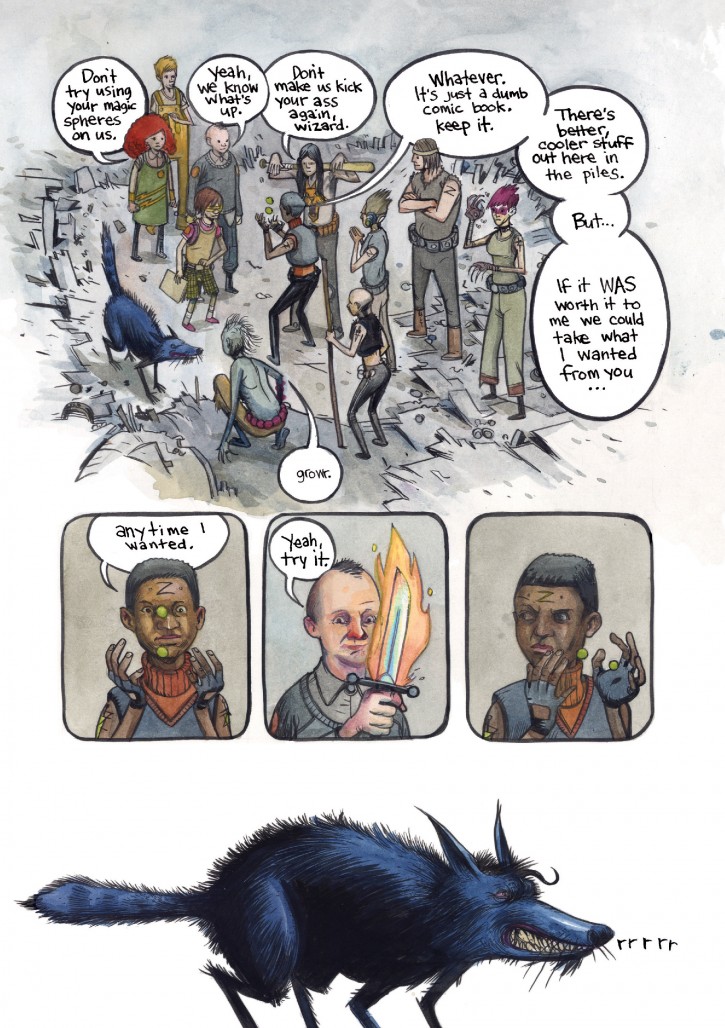
Farel: Oh yeah, it did look a little serial killer-ish.
Harper: Yeah, that’s exactly what I was thinking.
Farel: I kept adding notes – that was a thing too, the last chapter, that was kind of the hardest to sort of figure out, was to make everything kind of sync up because all the years that I was working on it, I kept like adding and getting ideas for things. “Oh, I want to do this and this” and “this will develop the Sherwood character more” and “I’ll put this in”. I had to edit a bunch of stuff out just to get it done because it would have been like twice the size as it is now if I just kept going.
Harper: How much fun did you have drawing the cross-sections of the secret headquarters? Those are definitely some of my favorite pages in the book.
Farel: Oh yeah, that was a blast. I love doing stuff like that. It would be fun to do more –sadly, it doesn’t lend itself I guess to the best storytelling, you know? It’s a fun visual thing.
Harper: Yeah, that’s for the companion book with all the maps to the hideouts. So of all the characters in The Wrenchies, which character do you feel like you kind of most identify with or maybe when you were a kid, which one of these characters would you have identified with?
Farel: Well, I guess that’s why I like that Hollis guy so much. I remember hearing someone talk about that character, they sounded like irritated by him and I didn’t take it personally or anything but it was just kind of funny to me that this person had almost like a negative emotional response to him ’cause I love him. I know he’s kind of supposed to be dorky or nerdy or whatever, you know, like I guess kind of sweetly pathetic or something. There’s just, I guess, a lot of me in there, from when I was that age or around that age or I guess even now, sometimes. I’d say him probably the most. But there’s also Sherwood, there’s a lot of autobiographical elements in that character, kind of obvious ones. Not obviously the fantastic stuff, but my anxieties and neurosis and all that was kind of cathartic for me working on him. It was kind of like including myself as a character in the book. From a more relatable level though, its Hollis for sure.
Harper: Yeah, that makes sense. And you use Sherwood to literally slay your demons, right?
Farel: Yeah, exactly.
Harper: What drew you to putting the plot together in such a kind of non-linear fashion? Was there an inspiration or an influence that kind of led to that format for the book?
Farel: I can’t really think of anything book wise to compare it to. I tend to think a lot of movies do that and can kind of get away with it. I don’t know why that is, but Pulp Fiction and Fight Club and stuff like that, I feel like that’s more common in that medium. To me, writing this book, it didn’t seem like it was a big deal to me to do that. I wasn’t necessarily trying to make a comic book that’s going to be a movie–I was kind of trying to do the opposite–it was just the most easy way to organize everything for me. The Wrenchies is like five different like comic books that are all telling the same story. It’s akin to the old Fantastic Four, even within the issue they would have different chapters and stuff and I just really like that sort of thing. Pop Gun War was kind of similar too, though I did release that in issues first. I guess with The Wrenchies, it was more – I could make each chapter as many or as little pages as I wanted to, so I just tried to kind of keep them all sort of similar in length wise. I felt like the quest chapter I could have made three times as long as it was, but I also started working on a web comic at the same time. I had to decide if I would incorporate some of this admittedly fun material here or there. I decided to hold some of it back for this webcomic.
Harper: Was there ever a thought to do The Wrenchies in single issue serialized form or was it always an idea as a graphic novel?
Farel: I thought about it, but I guess I wasn’t on my mind when I first met the agent and went to First Second with the pitch. It was after I actually started working on it and was like, “Oh man, this would be so much easier if I could just do it issue by issue” –particularly in getting feedback from people after they see it in print. I had never really worked on anything like that long in isolation before, but First Second doesn’t really do that kind of single issue thing typically beyond the promotional Battling Boy comic. They’re all just graphic novels. That was kind of the deal going into it, so it was too late at that point to serialize it. I thought about doing it online or something, but I was so focused on just trying to get the thing done that I was just, “Okay, I’ve just got to like keep my head down and power through this”.
Harper: So I saw the other day the Remainder short story that’s on Tor.com. How did that come about? Where did that come in the process?
Farel: That was Gina Gagliano at First Second, she’s their publicist and I’ve been working with her a lot, going over some different promotional ideas and things like that. Because First Second is owned by McMillan ultimately, and they’re also owned by Tor, I think they have like a good relationship and she suggested it to me. She was like, “Hey, do you want to do a 10 page story on Tor.com that’ll come out around the same time the book’s coming out, this promotional thing?” It sounded like a good idea to me, so I just started working out ideas in my sketchbook. I did all The Wrenchies pages on bristle board or watercolor paper, but “Remainder” I just started drawing in my sketchbook. I kind of did a little bit of a different process, where there was a mix of some Photoshop in there, which in The Wrenchies there’s hardly any Photoshop at all. It’s mostly just scanned straight in with some cleanup around the edges. The actual art is like pretty much what you see is what you get with the pages: the original pages. The “Remainder” story I kind of did a little more piecemeal where I would do a spread and then kind of try to clean up the seam, hopefully it looks pretty seamless. I guess people that have a little savvier of an eye can spot the differences in the art style, I guess.
Harper: It was just neat to see, for one, more of Bug Gun Guy, which is also the greatest character name of all time, I have to say.
Farel: Yeah, that just came out of Hollis, I wrote a scene in The Wrenchies where Hollis referred to him as that. So, while I was writing this story, I just started calling him that and it was like okay, that’s just going to be his name. But all that stuff in there is like the title of that, “Remainder”, and those two characters that feature kind of more prominently in that story are characters that kind of disappear in the book, so it’s like a little follow up to them. I guess that – that part was kind of fun, you know, like getting to do a little like “Hey, what happened to these guys” kind of thing.
Harper: Do you plan on doing any other kind of stories within The Wrenchies universe or anything else like “Remainder”?
Farel: Oh yeah. All the stuff that I write, the comics that I do myself, are all in the same universe and I can do whatever I want with them. I have some like crossover characters between like the Pop Gun War stuff that I do, like Hollis is going to be in the next Pop Gun War story.
Harper: Awesome.
Farel: And yeah, the web comic that I mentioned earlier, I just think of that as being in the same post-apocalyptic whatever fantasy world that The Wrenchies live in. There might be some crossover going on in there in the future, I don’t know. I want to do a Wrenchies sequel, just like a straight up part two. Particularly to follow more of Sherwood’s life on board this space station that I talk about in The Wrenchies. As I was working on it, I was kind of throwing things in a file for the next book, which I haven’t really started even really thinking too much about how I’m going to organize it all. But I definitely want to do a Wrenchies follow up and possibly like a third one too.
Harper: I’ll be watching for the expanding “Farel-verse”, I guess, right?
Farel: I like that.
Harper: I wanted to briefly talk about the title that led me to find your work, which is Prophet. You did a lot of work on that in the very beginning of when they relaunched it. How did you find yourself on that project?
Farel: Well, that was pretty much through Brandon Graham who’s an amazing cartoonist in his own right, with King City and Multiple Warheads. I don’t even know exactly how it came about but, Rob Liefeld was relaunching his line from the 90s and I don’t know if he suggested doing it or Eric Stephenson asked him to do it personally, I’m not sure. Somehow, down the road, he told me he was writing this science fiction comic: “It’s Conan in space.” I never really read the old Prophet but I loved that description. I said: “Oh, I love Conan and Conan in space, that sounds amazing! I want to do that!” That was really fun to do and I kind of couldn’t really afford to do it because I was supposed to be working on The Wrenchies, but it was such a cool opportunity getting to work with Brandon who’s one of my favorite cartoonists. I guess the weird factor of that book too, I don’t really see a lot of American comics that look anything like that or seem anything like that, so it just seemed like just kind of an amazing opportunity that I couldn’t turn down. I only did two issues really, so that should have just been a quick thing for me, but I spent way too long on that, especially that second issue I spent way too long working on. But, I’m glad I did it and yeah, it’s awesome getting to work with all those guys on that series and hang out with them too. I did a little on some of the later issues, a couple pages here and there and some covers. I would have loved to have drawn more of that because that is a really cool series. It’s one of my favorites.
Harper: With Earth War coming up, are you going to be involved in that at all?
Farel: No, I’ve got too much stuff on my plate. I’d love too. I think Simon (Roy) is writing that too, right?
Harper: Yeah, they’ve started heavily co-writing.
Farel: Yeah, that would have been really cool. I think they kind of have their whole like art team locked in. And…they’re doing that Strike File stuff which I wanted to do some stuff for that too, but I just…
Harper: Oh, the Farel-verse calls!
Farel: Yeah, I know, that’s what I’m saying. I’m 42 now, I’ve got to get on the Farel-verse train.
Harper: The material that you’re working on now, what can your fans look forward to coming out in the next couple months or years?
Farel: Well, the two things, I just did like three pages for a Captain Victory kind of reboot thing. I think Dynamite is putting it out, so I’m just finishing that up. I’m also working on a science fiction love story with a writer, Chris Stevens, that’s going to be in Dark Horse Presents once I get enough pages done on it. I only have eight done at the moment but that’s going to be around 90 pages or something like that when it’s finished. I’m also working on that Pop Gun War sequel again. I started working on that again.
Harper: Do you know which issue of Dark Hose Presents that story’s going to start in?
Farel: I don’t know actually. I was supposed to have enough stuff done to have it be in the first issue but that was months and months ago. But, with all The Wrenchies promotional stuff, I haven’t had time to work on it. At this point there’s not really a date set. I think it’s just once I get enough pages to where it’s a safe bet that I won’t make the book late or anything, I think they’re going to start scheduling it. I’m kind of driving the writer a little crazy I think with how slow I’m being on it.
Harper: Where can your fans find more of your work and find all your stuff online and follow you on all the social media and all that good stuff?
Farel: Well, I have a website, it’s just FarelDalrymple.com. Or that’s also PopGunWar.com. I have links there to Facebook and all that stuff. My web comic which I have been taking a break from the past couple months, but I’m going to get back on it is called It Will All Hurt and it’s on the Study Group Comics website which has a bunch of other web comics by a bunch of brilliant cartoonists.


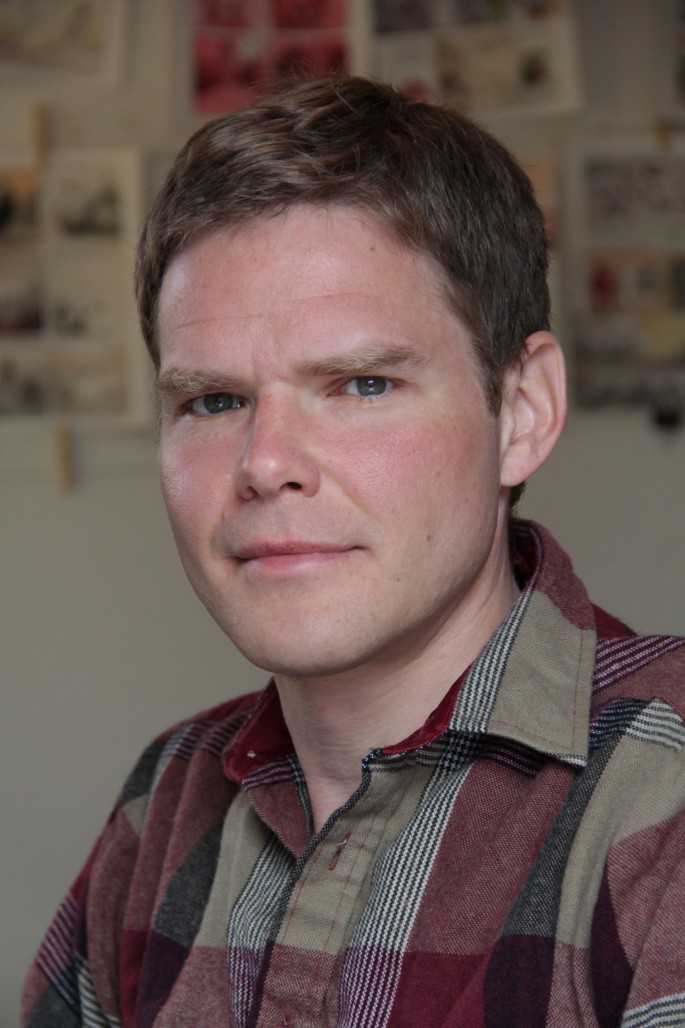
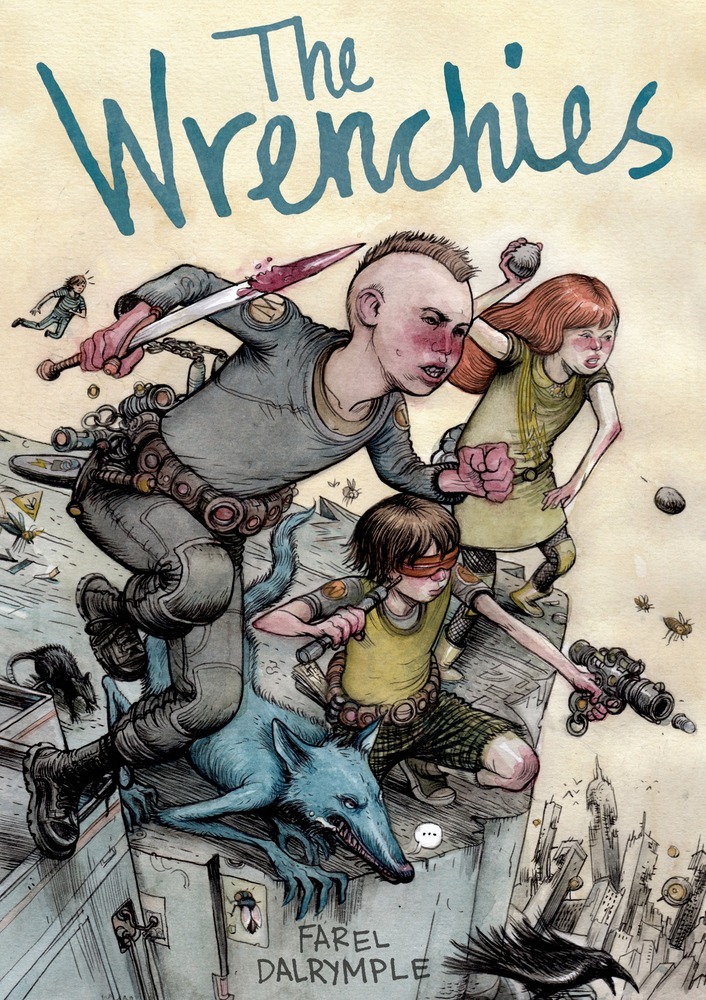
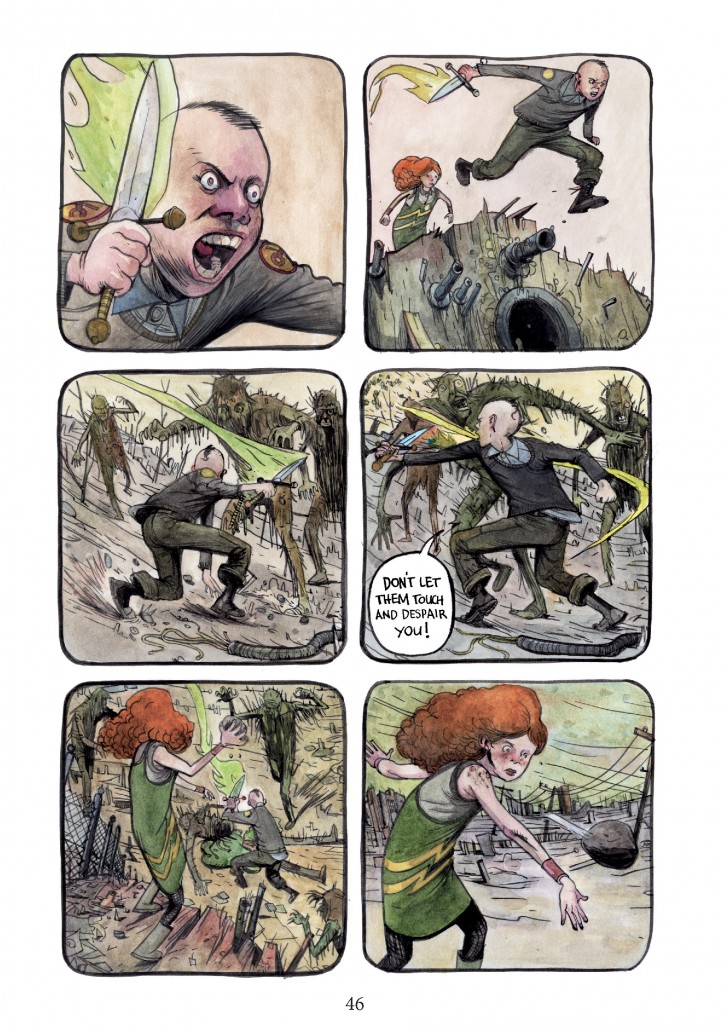
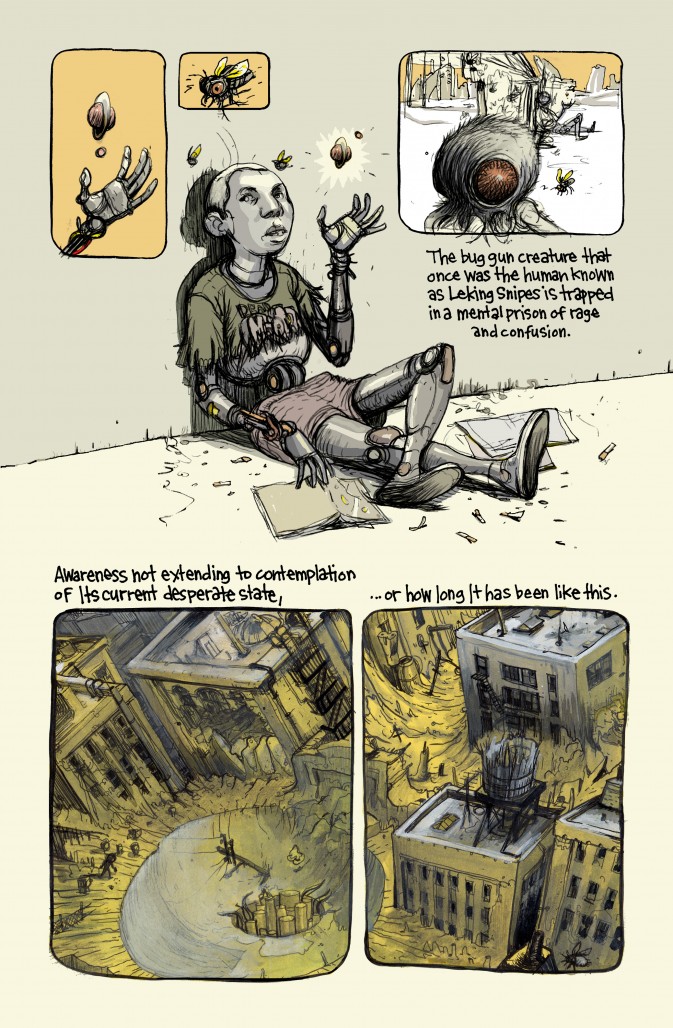
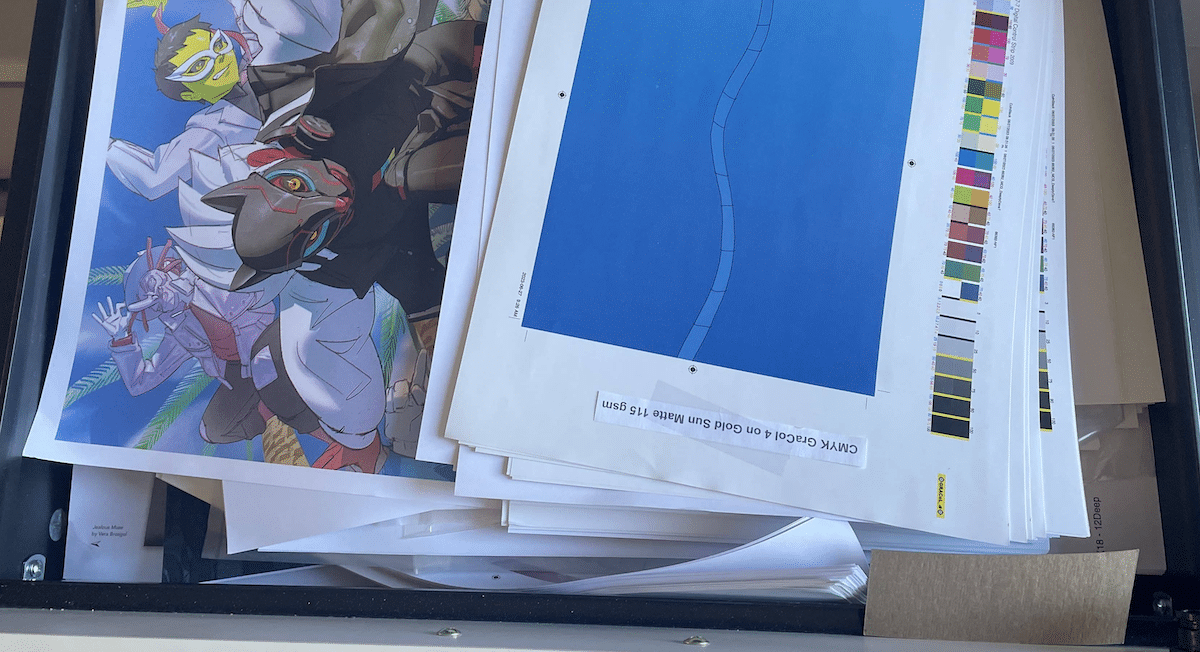
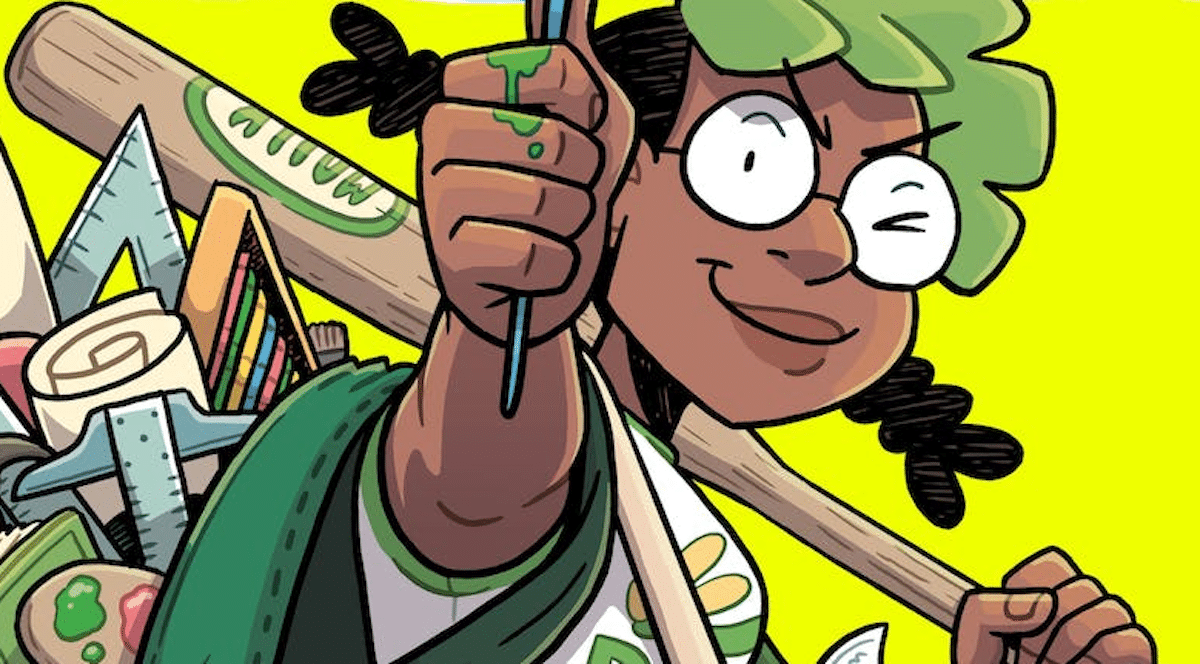
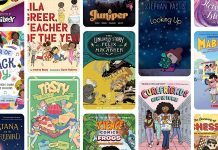



This is a great interview. I really loved this book even though I don’t have everything figured out because it is such an enormous journey into Dalrymple’s head. Pus the more you have read of his personal stuff the more recurring characters and pieces to a larger puzzle you get and the art is super accomplished. It’s pretty rewarding stuff.
One correction though. In the second paragraph it should be Hollis, not Orson. Thanks again for posting this.
Great interview!!!
I’m in love with Farel Dalrymple’s The Wrenchies! I’m reading it atm and to stumble upon this interview just adds to the entire experience. I do hope to see a Wrenchies 2 sooooon!
Comments are closed.